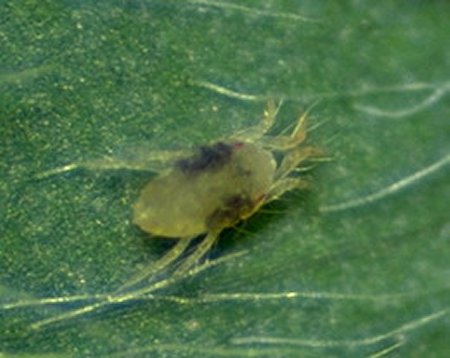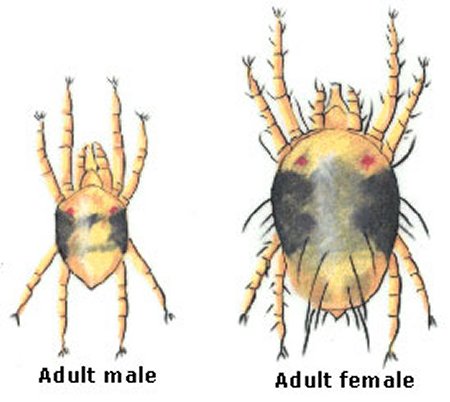
2005 Year in Review
Back to Page two: Agriculture Listing | Back to Year in Review Index
From the Fields - Two-Spotted Spider Mites |
|
Source: Jim Morrison, Extension Educator, Crop Systems, Rockford Extension Center, University of Illinois, 417 Ware Avenue, Suite 102, Rockford, IL 61107, Phone 815/397-7714, Fax 815/397-8620, email: morrison@uiuc.edu As northern Illinois continues to experience severe dryness, two-spotted spider mites continue to “rob” soybean plants. As soybean fields are scouted for various pest problems, be sure to be on the lookout for spider mites. Two-spotted spider mites overwinter as adult females in sheltered areas like field margins, pastures, etc. Mite problems are associated with hot, dry conditions and when soybean is moisture-stressed. Generations are completed in 4 to 14 days with the fastest developmental rates happening above 91 degrees F. Adult mites are yellowish orange with two large black spots on each side of the body. They are dispersed into fields by wind and their webbing, as they lack wings. Infested soybean leaves turn yellow or brown and may take on a sandblasted or dusty appearance. The webbing may also be seen on infested leaves. When an infested leaf is “tapped” over a piece of white paper, the mites appear as moving dots or specks on the paper. Since spider mites move from “nutritionally deficient” hosts (grass in fence rows, etc.) to soybeans, infestations will occur most likely along the edges of fields, especially in tilled fields. No economic threshold has been developed for this pest and the recommended need and timing of a miticide application are subjective. One needs to consider the amount of damage or discoloration, the number of spider mites present, and the weather forecast. The decision to treat is on a field by field basis. As a guide, treatment should be considered when 20 to 25 percent discoloration is noted before pod set and 10 to 15 percent after pod set. Spot treatments (for example, treating the field end rows or border rows) will be effective only if spider mites are confined to those areas. One needs to examine the entire field, not just the infested areas. If mites are generally distributed throughout a soybean field, it is probably only a matter of time before symptoms appear in areas other than field edges. One of these two products should be used if treatment is warranted: chlorpyrifos (Lorsban 4E or Nufos 4E) or dimethoate. Be sure to read and follow label directions. by Editor, theCity1.com |
|
Copyright © 2005 TheCity1.com.
All rights reserved



